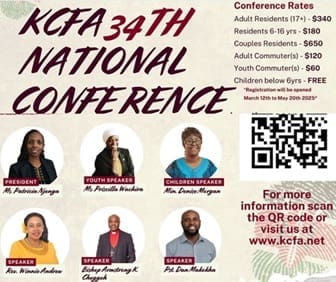
Moses Kuria, the outspoken and controversial member of parliament representing Gatundu South constituency recently published a book. When I got a copy for this review, I had expected to be reading his autobiography. But as he explains in the introduction, he decided to release a book that is a collection of opinion pieces that he has penned down since he started writing over two decades ago.
In Kenya, the name Moses Kuria means different things to different people. To some, he is the bold, candid and loyal supporter of the Jubilee party who has proven his allegiance. While to another section of Kenyans, the man represents a classic definition of a loose cannon ready to fire at the slightest provocation.
Ladies and gentlemen, like other Kenyans, my opinion and perception of Moses Kuria had been built through his utterances in parliament, public rallies, interviews and his social media posts spanning a period fewer than 5 years.
When I was handed the ‘Tell it as it is’ book to review, I first saw it as an uphill task but then I remembered my calling as a journalist to be objective.
When I opened the first page, the first casualty was the many prejudices I had built about him. Every wall of prejudice that I had built about the man came tumbling down. As the saying goes, before you criticise a man, walk a mile in his shoes.
The book is divided into 7 chapters covering his writing from 1992 to 2016. The broader categories of the book would be the Moi rule, Kibaki rule, and Uhuru Kenyatta’s rule.
These opinion pieces were published in the major newspapers, websites and magazines including the Daily/Sunday Nation, the Standard, the Star, Society, People Weekly, Weekly Review among others.
The book will expose you to a man who has been an ardent consumer of news and current affairs.
Instead of indulging in candies like his siblings would do when the mum rewarded them after a hard day of labour on the farm, he would rush to buy newspapers instead.
The variety of topics discussed in the book shows that Moses Kuria is a man who understands a wide range of topical issues from economics, agriculture, politics, history, current affairs among other topics.
“For you to make a name, you had to fight big men in big wars” that’s how Moses Kuria declared war against Miguna Miguna and the sentence summarises the underlying message in ‘Telling it as it is.’
In the pages of this book, you will interact with the side of Moses Kuria that many Kenyans don’t know. A man who went to comfort and support mothers who had gone on a hunger strike at the All Saints Cathedral to get their sons released in 1991.
In this group, he met Wangari Maathai who was giving moral support to women who were fighting KANU’s tyranny. The women included Koigi Wa Wamwere’s mother whose sons were political prisoners during Moi’s dictatorial rule.
The Moses Kuria we know might sometimes appear abrasive but as you turn each page, you will interact with a man who is resilient and devoted to his beliefs.
‘Telling it as it is’ will remind you of the struggles of multi-party democracy and the role that students, especially from the University of Nairobi (UON), played to agitate for reforms.
From the loans that were acquired under the Paris talks led by the young finance minister Musalia Mudavadi to the National Cereals and Produce Board of Kenya (NCPBK) reforms that allowed private traders to sell up to 88 bags of maize, Moses Kuria’s analysis of these events is well captured in the book.
When the 500 shillings, better known then as Jirongo was printed during the 1992 elections and it flooded the market, Kuria analyses the effect of the action to the economy of Kenya.
From this book, you will read about the rise of building societies that originated from Kiambu and Muranga to take over the financial market.
You will see the story of the big banks that increased minimum and interest rate earning balances with reckless abandon and later paid the heavy price for it.
As Moses Kuria ably puts it, the same banks that had shown small savers their backs would return to them with their heads bowed.
In this book, you will read the once vibrant coalition between the Kikuyu and Luo communities to fight for political pluralism during the dictatorial days of KANU. You will read about Moi’s attempt to galvanise the small communities to support him and what Moses Kuria thought of it.
You will read the re-election of Mwai Kibaki and Moses Kuria’s support of the Kibaki’s side of the nusu mkate administration. The well-orchestrated plan to delegitimize Miguna Miguna who had turned out to be a thorn in the flesh of the Kibaki side of the coalition is catalogued in the book.
The dynamics of boardroom strategies to turn around the International Criminal Court cases against Uhuru and Ruto into a springboard is captured in the book.
The post-KANU articles are more geared towards supporting the administration of the day. The fire in his belly for reforms seems to have died when Kibaki came to power. He was very vocal against the Kalenjin hegemony during Moi rule but when Kibaki took power, his tone changed. While it is true that Kibaki heralded a season of widened democratic space in Kenya, Moses Kuria should have compiled articles where he took a swipe when the scandals billowed to cut an image as a consistent man fighting for the common mwananchi.
Though this is not his autobiography, he should have taken a few pages to address the allegations of hate speech that have been levelled against him.
At some point, it became a bit overwhelming to read one man’s opinion. To make the book interesting, Moses Kuria should have incorporated analysis of his opinions in retrospect putting into consideration the lessons he has learnt over time.
Finally, the appropriate title of the book should have been ‘Telling it as I see it’ because it’s simply a compilation of Moses Kuria’s views.
By Dannish Odongo
(The writer is a political commentator and a writer. Follow him on twitter @dannishodongo)
Source link-capitalfm.co.ke
Moses Kuria Telling It As It Is Says Dannish Odongo







